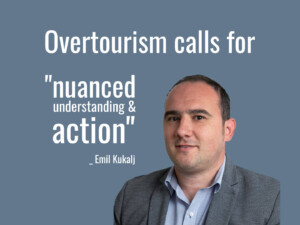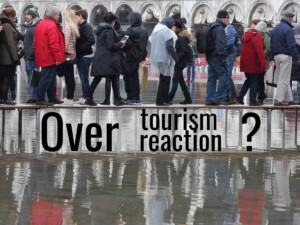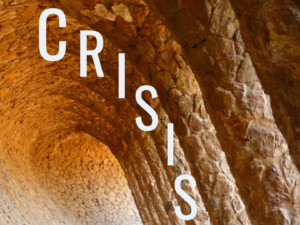Regaining control: Venice takes ‘smart’ measures to manage mass tourism
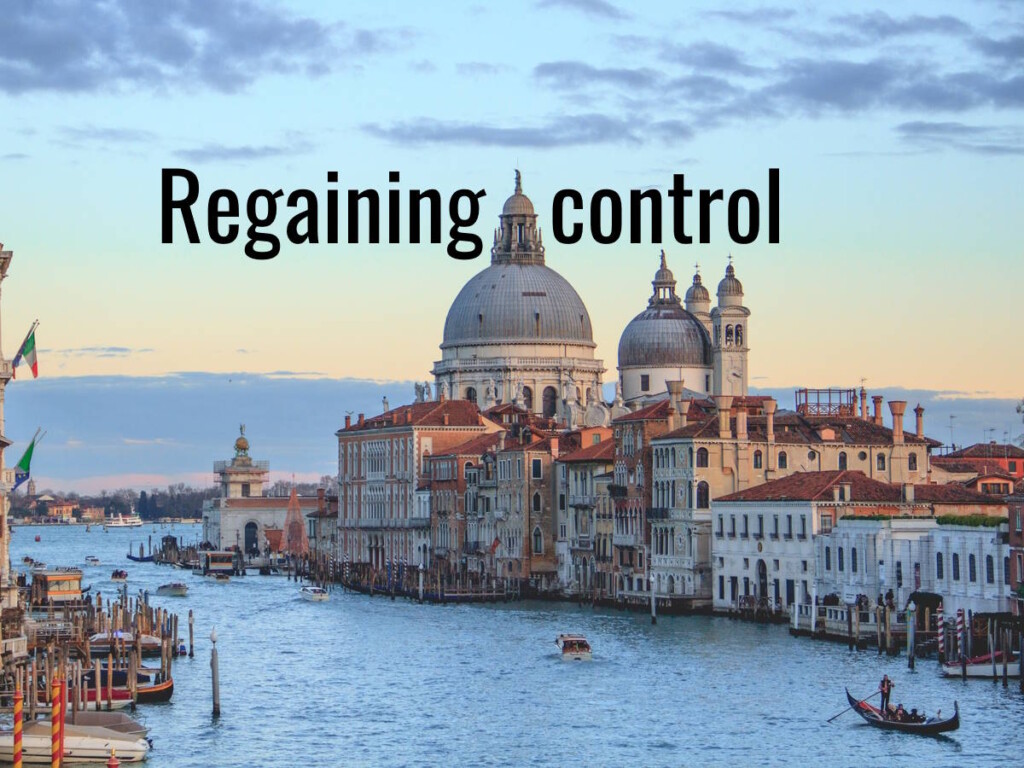
It is widely acknowledged that Venice needs to do something to manage mass tourism.
The question is: ‘What?’
Will deploying technologies that measure visitor flows help Venice develop more effective strategies to manage them?
Anna Richardot investigates what Venice is doing in this “Good Tourism” Insight.
[You too can write a “GT” Insight.]
To say that Venice suffers from mass tourism is an understatement. Its roughly 5 million visitors per year (pre-COVID) have decimated the population, largely destroyed its service infrastructure, and generated massive overcrowding and pollution.
In this “Good Tourism” Insight, we will see that the city is finally implementing large-scale measures to regain control and better manage its tourism flow.
‘Outstanding Universal Value’ under threat
The city of Venice was recognised by UNESCO as a site of “Outstanding Universal Value” in 1987.
In October 2019, a meeting was held at UNESCO headquarters in Switzerland with representatives from the city of Venice and the Italian government, to discuss whether this recognition was still justifiable.
According to the resulting report, “Venice is threatened on several fronts”, from overtourism and large cruise ships to the “negative effects of new developments”.
Don’t miss other “GT” content tagged with
“Carrying capacity, mass tourism, and overtourism”
The principal criticism was that the city lacked an integrated management system.
Venice lives on tourism, which brings economic benefits — some 65% of the jobs in Venice are linked to tourism — but is also the primary cause of the city’s problems.
Few Venetians have shared in the economic benefits of tourism. Rather, the resident population has been diminished by the industry. In 1951 there were more than 170,000 people living in the historic centre. Today there are barely 50,000.
This mass departure can be partly explained by the increase in the cost of living, but also by overcrowded conditions; the closure of public services in education and healthcare due to a diminishing population; the closure of local food and clothing stores, often transformed into tourism boutiques; and the conversion of resident accommodation into ‘sharing economy’ units (Airbnb or similar).
Don’t miss other “GT” content tagged with
“Travel & tourism and destination management”
In addition to this desertification, Venice has had to face societal problems.
By the 1990s, it became evident that huge cruise ships entering the lagoon were weakening the literal foundations of the city; the wooden pilings on which it stands.
These cruise ships, while pouring tourists into the historical centre, provide relatively little economic benefit. Cruise tourists do not stay more than a day in the city, spend little, if anything, in the local shops, yet they crowd the streets.
Day visitors, whether from a ship or across from the mainland, collectively represent one of the major problems in Venice. Their negative impact on Venice is deemed the highest even while their presence is difficult to estimate.
Don’t miss other “GT” content tagged with
“Travel & tourism industry policy and governance”
Meanwhile, pollution in Venice is a problem. Nearly 40% of the city’s total waste is attributed to the tourism sector.
All these situations stem from the same basic problem; a lack of tourism management and control in Venice, which leads to mass tourism.
How does Venice manage mass tourism?
Venetian and national authorities are proposing and implementing measures to manage mass tourism in the historic city. These include:
Relieving the lagoon of large cruise ships
Since August 2021, cruise liners exceeding 25,000 tons have been prohibited from entry; a first step in limiting damage to the city’s foundation and reducing pollution.
The Italian government’s ban came after decades of complaints and petitions from Venetians and supportive NGOs, as well as delisting threats from UNESCO.
The measure represents a first step towards a more sustainable tourism and a greater respect for Venetian cultural heritage.
Imposing an entrance fee on day trippers
Another measure, which has attracted considerable international attention, is the proposed (and postponed) introduction of an entrance fee or tax to access the city.
According to the proposal all visitors wishing to enter Venice for a day would have to make an online reservation and pay a tourist tax in the range of EUR3 to EUR10 per person, depending on the season and the number of people already in the city.
The long-term objective is to encourage day-trippers to come during slower periods by adjusting the tax according to the season; to spread tourism throughout the year and to reduce crowding in the summer months.
The tax would only apply to day trippers. Exemptions would be available to children under the age of six, people visiting a relative or for medical reasons, those who live in the Veneto region, and anyone staying in the city for at least one night.
Also see Dominic Standish’s “Good Tourism” Insight
“Mass tourism in Venice: Are city officials overreacting?”
The city has proposed implementing a QR code as a proof of payment; to be presented by the day tripper if challenged by an authority.
Fines would presumably be levied on those who fail to pay the tax.
Proceeds from the tax would be invested in the development of tourism management systems, such as the Venice Smart Control Room (see below), to gain more knowledge and control of tourism.
Authorities want to know the number, flows, and patterns of people in the city so that they might adapt policies and services to more effectively manage mass tourism.
Centralised ‘smart’ monitoring and control
A more comprehensive measure to manage mass tourism is the Venice Smart Control Room, which aims to paint a portrait of tourism in Venice.
Opened in 2020, but still very much under development, this EUR 3 million control system is financed by the European Union and the city council.
The Venice Smart Control Room aims to understand tourism flows in Venice, including the neighbourhoods and streets that are recurrently overcrowded and when; the nationality of tourists; the pressures on public transport and traffic, and much else.
Located on the island of Tronchetto, to the west of the city, the Venice Smart Control Room is divided into two parts:
- A large video surveillance room staffed by police, which receives images from closed-circuit cameras placed around the city; and
- An intelligence centre providing information on the number and behaviour of visitors based on signals received from their mobile devices.
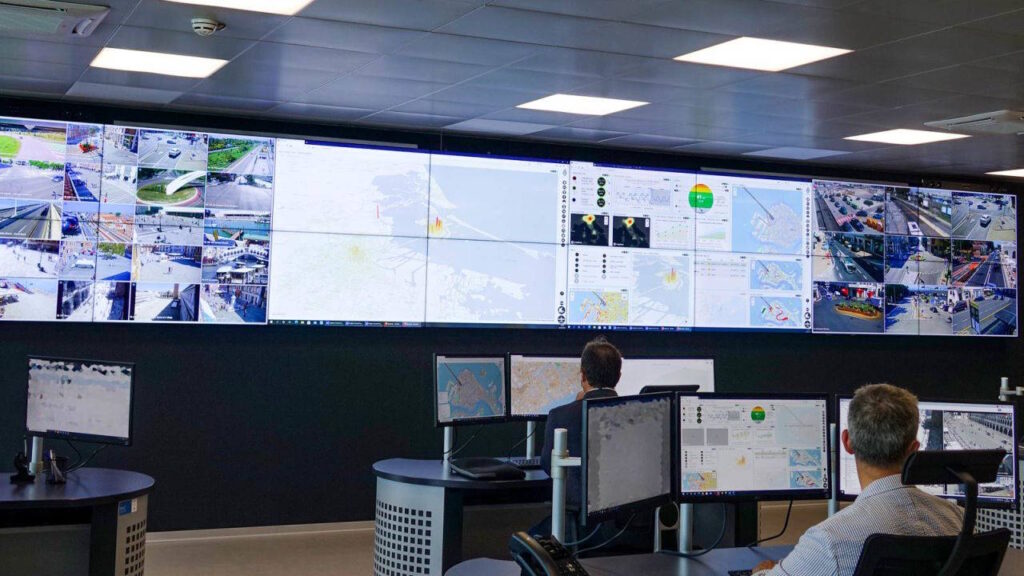
Surveillance camera software can determine whether a visitor is an adult or a child without transmitting precise images of faces to the control centre.
The control room receives data from sensors placed in high-traffic areas that detect mobile devices, their countries of origin, and record their owners’ direction and speed of travel in the city, and when they enter or exit.
The system can also analyse the different types of boats present in the Grand Canal and detect if a water bus is late and by how much.
These high volumes of data are analysed and visually represented on the walls of the intelligence centre in real time.
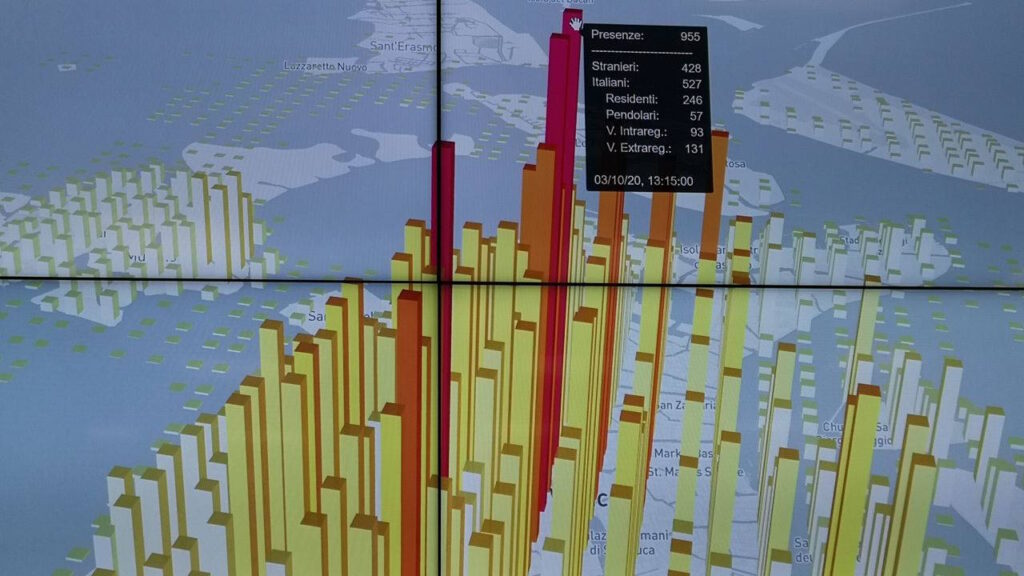
The state-of-the-art Venice Smart Control Room, unique in Europe, may inspire other cities to implement similar measures to regulate and better manage tourist flows; to preserve the heritage of cities that are under threat.
By itself, the control room does not resolve the problem of how to manage mass tourism in Venice. However, it can potentially build knowledge that will underpin other control measures — such as the proposed entrance fee — and make them more effective.
What do you think? Share your own thoughts in a comment below. Or write a deeper “GT” Insight. The “Good Tourism” Blog welcomes diversity of opinion and perspective about travel & tourism, because travel & tourism is everyone’s business.
“GT” is where free thought travels.
Featured pic (top of post): Can Venice regain control to effectively manage mass tourism? Image © Henrique Ferreira.
About the author

Anna Richardot is a graduate student in Events and Tourism at SKEMA Business School, France. Ms Richardot is interested in the challenges facing travel & tourism.



